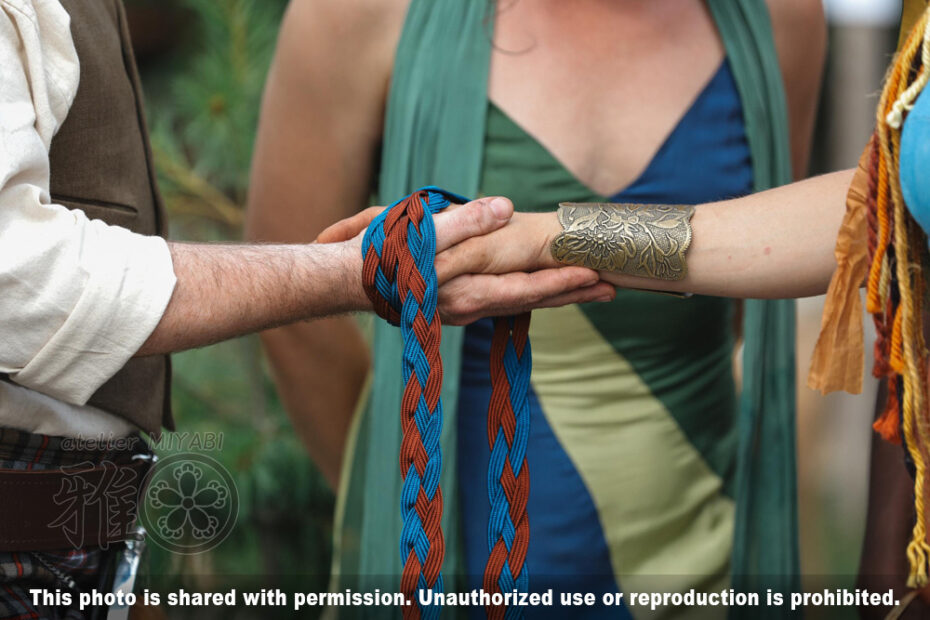Honoring a Martial Arts Tradition Through a Wedding Ceremony
At Atelier Miyabi, we’re always moved by the ways our cords become part of people’s personal stories. One recent message from a customer truly stood out: a couple used our 10mm silk tsukamaki cords during their wedding ceremony to symbolize their union.
The groom, a practitioner of Shinto Muso Ryu Jo—a classical Japanese martial art from the 17th century—wanted to reflect his dedication to budo during the ceremony. Together, they chose to use three traditional silk cords typically reserved for katana handle wrapping (tsukamaki) in a contemporary handfasting ritual.
“We used the tsukamaki cords for our wedding ceremony. I practice Shinto Muso Ryu, so I thought it was fitting to bring a little of Japanese martial arts to our ceremony. Thank you so much for making our day a little more special.”
— Shared anonymously with permission
What Is a Handfasting Ceremony?
Handfasting is an ancient wedding ritual that involves tying the couple’s hands together with cords—a symbolic act of unity, partnership, and mutual commitment. This tradition has gained popularity in modern weddings for its intimate and meaningful symbolism.
In this couple’s case, the use of Japanese tsukamaki silk cords infused the ceremony with layers of personal meaning: a quiet nod to martial discipline, heritage, and the beauty of Japanese craftsmanship.
Why These Cords Held Special Meaning
Originally designed to wrap the hilts of swords, tsukamaki cords are made for strength and resilience. But beyond function, they carry aesthetic elegance and deep cultural roots. The 10mm silk cords chosen for the ceremony had a substantial feel, yet remained flexible enough for hand-tying—combining utility with grace.
Using them for a wedding wasn’t just a creative idea; it became a powerful metaphor: a marriage bound by tradition, discipline, and shared values.
From Sword to Ceremony: A Quiet Evolution
We never imagined that our tsukamaki cords—made with care in Japan using traditional techniques—would become part of something as deeply personal as a wedding vow. But that’s the beauty of craft: it lives through the hands and stories of those who use it.
While these cords were originally intended for martial arts tools, they’ve quietly found their place in meaningful milestones—from weddings to commemorative rituals.
If you’re curious to see what these cords look like, or how others have used them, you can explore more here:
Explore 10mm Silk Tsukamaki Cords →
Carrying Tradition Forward
This story reminded us that tradition is never static. It evolves with intention. It becomes new again through use, reinterpretation, and care.
Whether you come from a background in budo, are planning a wedding, or simply love Japanese design, there’s something timeless in the act of tying a cord by hand. In each knot, we find connection. In each strand, a shared purpose.
Thank you to the couple for allowing us to share a small part of their story.
Tags: Japanese wedding cord, martial arts ceremony, silk tsukamaki, handfasting traditions, wedding symbolism, Japanese braid, 10mm silk cord, Shinto Muso Ryu, tsuka cord, samurai wedding accessory
